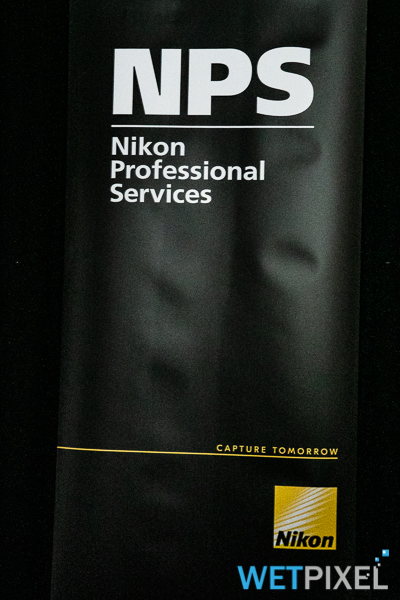Report: Nikon Professional Roadshow 2019
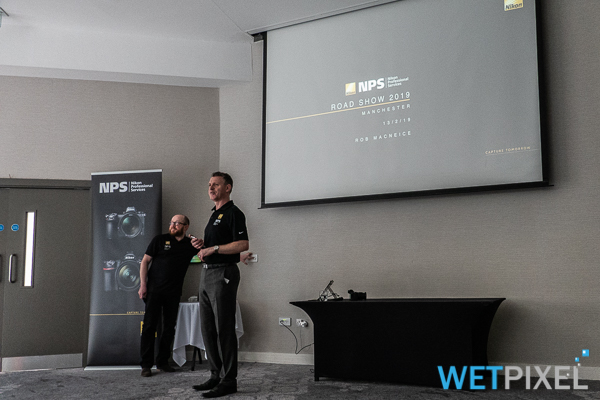
Nikon Professional Services in the UK hosts an annual event which aims to put Nikon’s new products in the hands of its “pro” users.
Nikon’s Rob MacNeice kicked off with a review of Nikon’s pro-level models, the D850 and D5. He was at pains to point out how groundbreaking both cameras were when they were released and the accolades that they have received from the industry and public. He hailed the D850 as “the best SLR you can buy,” but also added that the D5 is still a great choice for press and journalism, with its amazing high ISO performance and high frame rates.
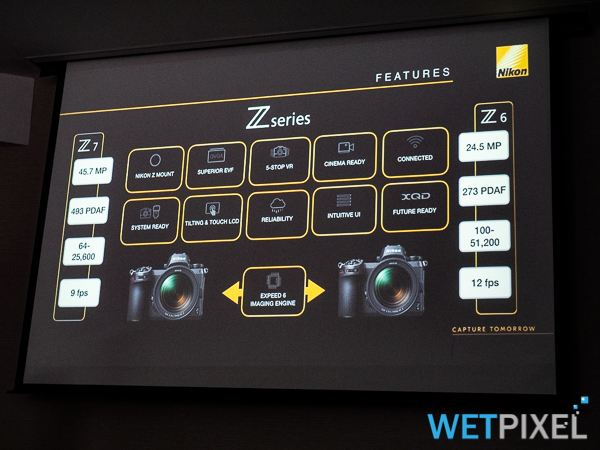
He fairly swiftly moved on to the new models in Nikon’s pro range, the mirrorless Z6 and Z7. Identical in body size and control layout, Rob emphasized that the cameras follow a control layout, menu structure and design philosophy that runs through all Nikon cameras. This should allow users to switch between Z series and “conventional” Nikon SLR cameras seamlessly. The new cameras are built is the same way as Nikon’s other pro-level bodies, constructed of magnesium alloy with extensive weather sealing. Rob stated that mirrorless is “the future” and although this was a personal opinion, it seems to reflect Nikon’s corporate position too. This probably means that development resources are likely to be directed at mirrorless, to the detriment of SLRs. Of course, Nikon is well-known for offering surprises too.
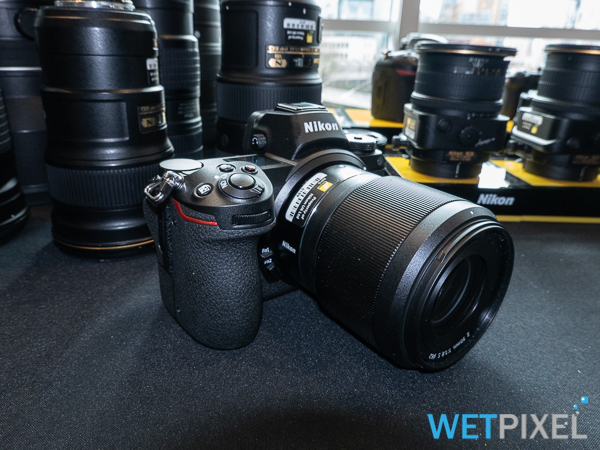
The Z mount has a very wide 55mm diameter, exposing more of the sensor to the lens, along with a shallow 16mm “flange” that puts the sensor close to the rear end of the lens’s optical elements.
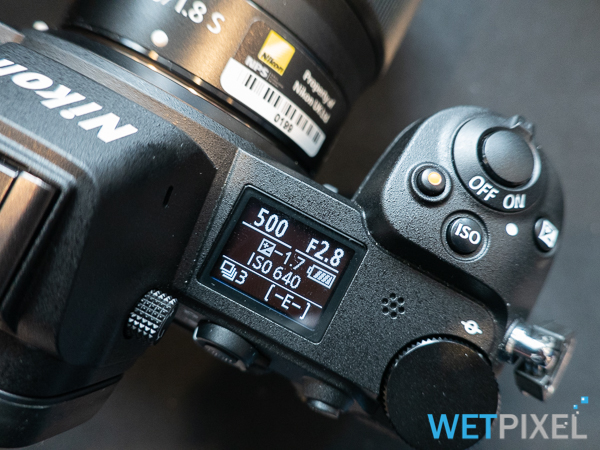
The Z7 features 48.7MP with 493 phase detect AF points, while the Z6 has 24.5MP with 273 AF points. Both are equipped with the Expeed 6 image processing engine providing a native ISO range from ISO 64 to 256,000 for the Z7, with 100 to 51,200 for the Z6.
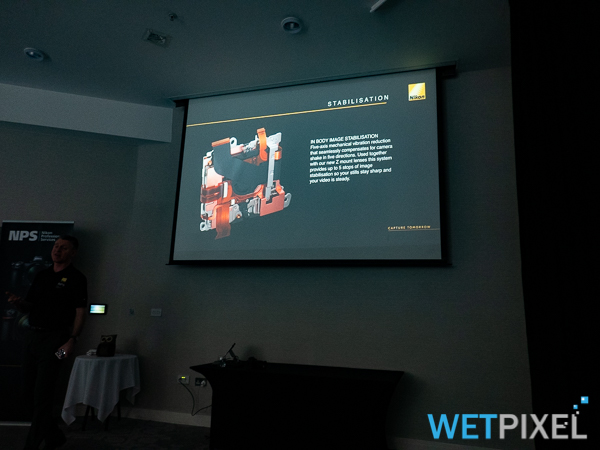
Both cameras have 5 axis in-body image stabilization that works in conjunction with any lens VR. Rob stated that this offers up to 5 stops of exposure when hand holding. The cameras record internally to XQD cards.
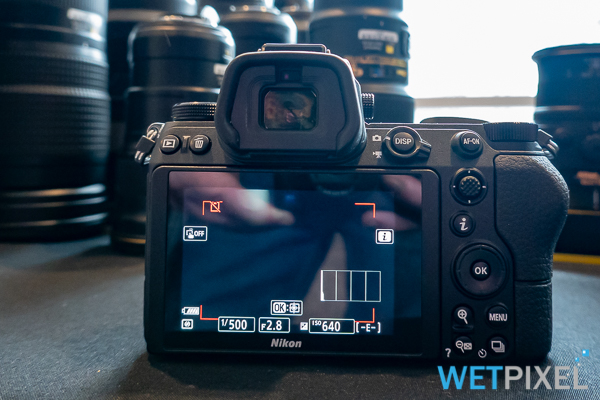
Nikon offers the ZTF adaptor that allows the use of Nikon F mount lenses with the new Z mount. There are currently no lenses that seem particularly suitable for underwater use in native Z mount, although Nikon does have the 14-30mm f/4 and a 20mm f/1.8 lens scheduled for 2020. Practically, this means that mean that for underwater shooting, Nikon Z users are going to be using the ZTF adaptor with existing F mount fisheye and macro lenses for the foreseeable future.
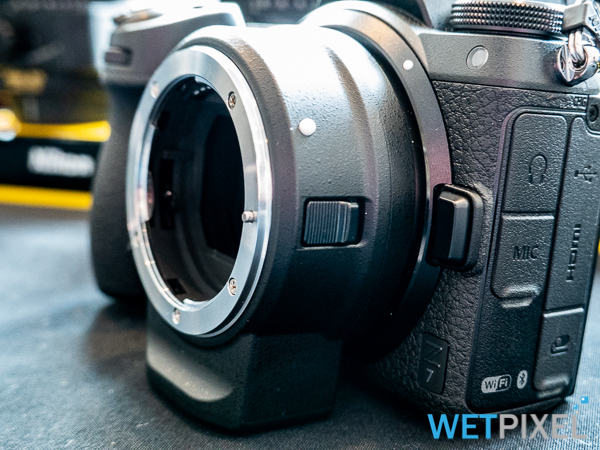
Rob made the point that as Nikon has no high-end video camera to protect, they can incorporate all and any video features. The Z series both offer 4K (3840 × 2160)/30p and 1080/120p options. The Z6 with its lower resolution has direct sensor readout with no line skipping or pixel binning. Internal recording is 8-Bit (see later) and the camera supports 10-Bit 4:2:2 N-Log capture over HDMI.

One final new feature is the ability to charge batteries in camera via USB. The camera has a USB C connection and is supplied with an EN-EL15b battery, which allows it to be charged via USB connection. Please note that previous EN-EL15 batteries will work with the Z6/7, but will not allow for USB charging.
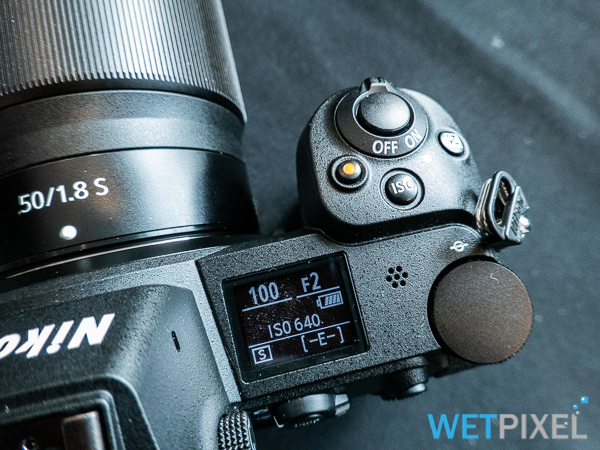
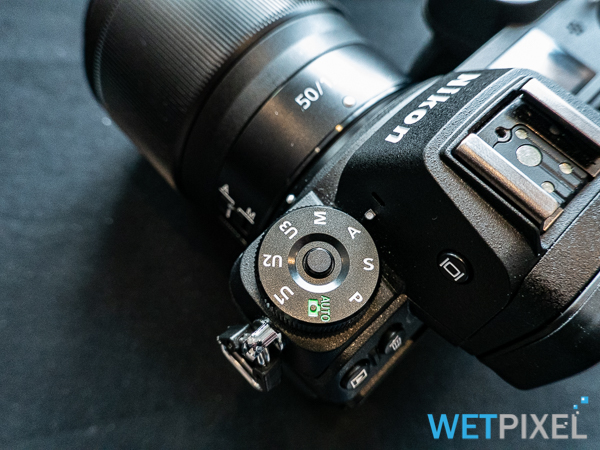
Nikon has announced that a firmware update is imminent for the Z series cameras that will offer Eye AF (which does not work with non-human eyes), compatibility with CFexpress cards and substantial video upgrades.
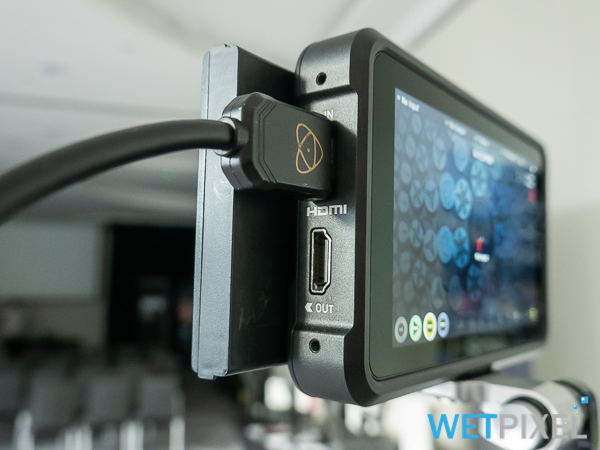
Most notably, it will offer the option to record 12-Bit ProRes RAW over HDMI to the Atomos Ninja V external recorder/monitor.

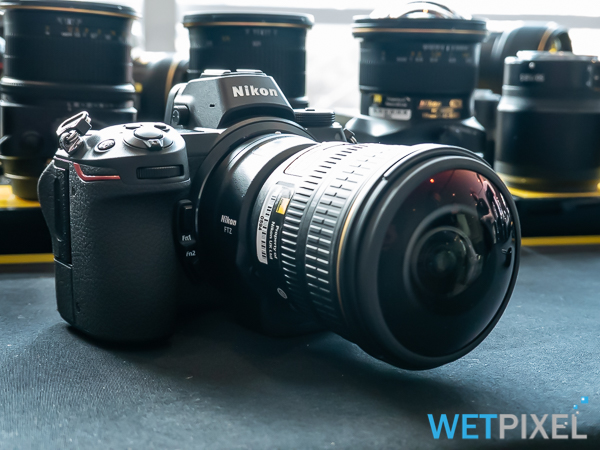
I was able to use the Z7 with both the Nikkor 8-15mm f/3.5-4.5 fisheye and the 105mm f/2.8 VR macro lenses. Both required the use of the ZTF adaptor. Predictably, the AF seems fine with the fisheye. I then mounted the 105mm and I was disappointed with the results. While it found focus on a brightly lit subject, it hunted a lot to do so. Certainly, when compared with the amazing AF on the D500/D850/D5, the Z7’s felt both slower and less accurate.
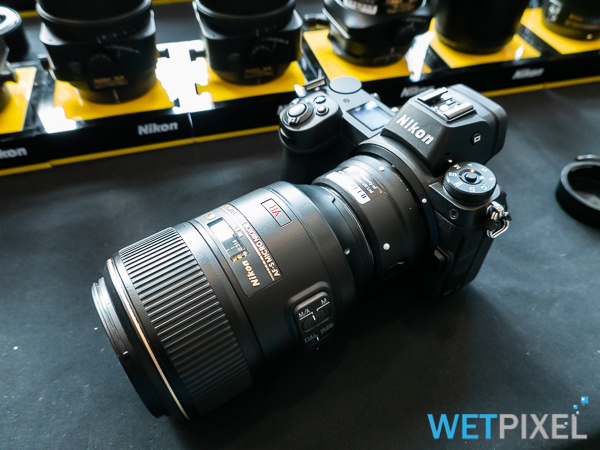

Understandably, it has less AF options than SLRs. The Z7 doesn’t have D25, D72, or D153 dynamic-area AF points. Nor does it have Group Area AF. Although it has 3D tracking, it is hidden under the Auto Area AF mode rather than as a separate option of its own. The Z series cameras also do not have AF control buttons, but rely on menu driven options. There is the option of assigning AF settings to a custom button, however.

EVFs are very much something you either like or do not! Nikon’s 1.27cm OLED has 3690k dots with color balance and both automatic and manual brightness controls. One interesting idea with EVFs is that they can show the picture profile in use. Hence, when shooting with a mono picture profile, the EVF will show the scene/subject on mono too.
Rob handed over to Darren Fellows of Rotolight. This company produces surface lighting for still and videography, using LEDs. These allow for variable output and color temperature, along with a flash option. The Neo 2 seems like an excellent solution for surface lighting.
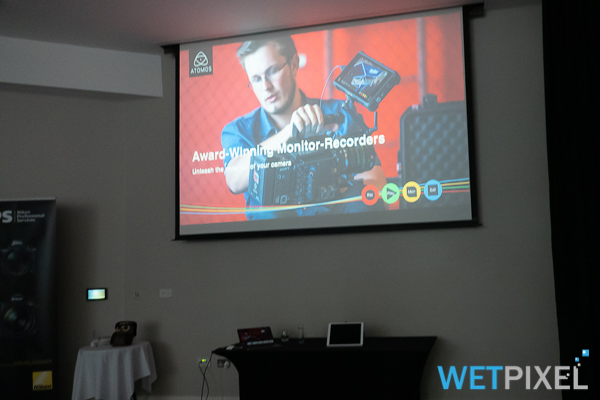
The last speaker was Andrew Hall, from the UK distributor of Atomos, Global Distribution. Given the news that the Z series cameras will be able to record ProRes RAW over HDMI soon on the Ninja V, it was apposite to present a round-up of video and external recording.
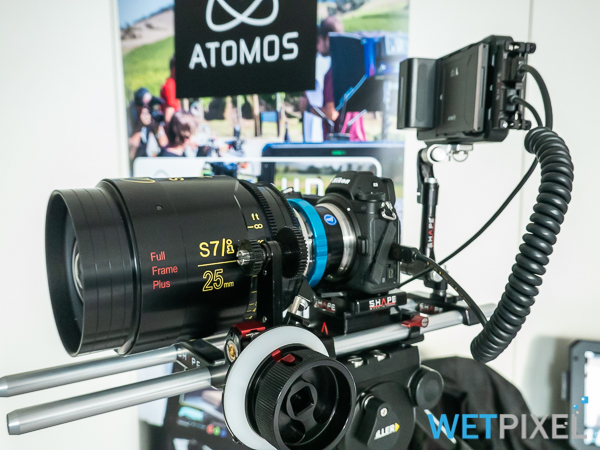
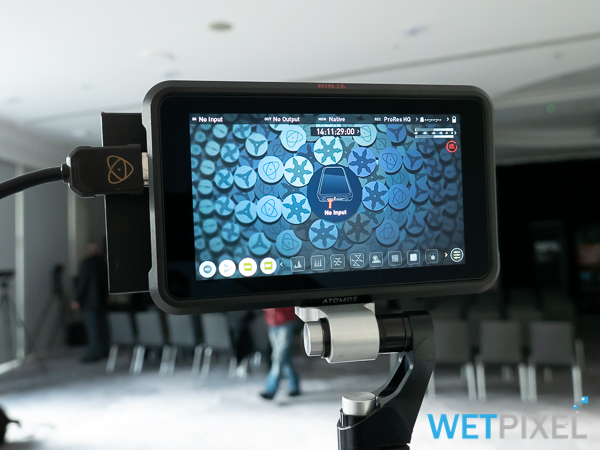
These events offer a great opportunity to check out some of the amazing gear that manufacturers produce!
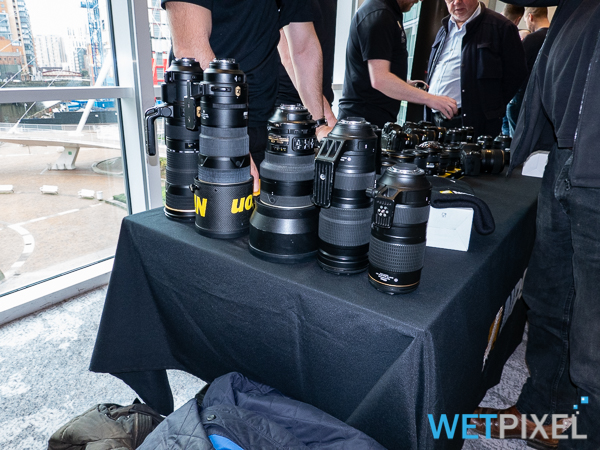
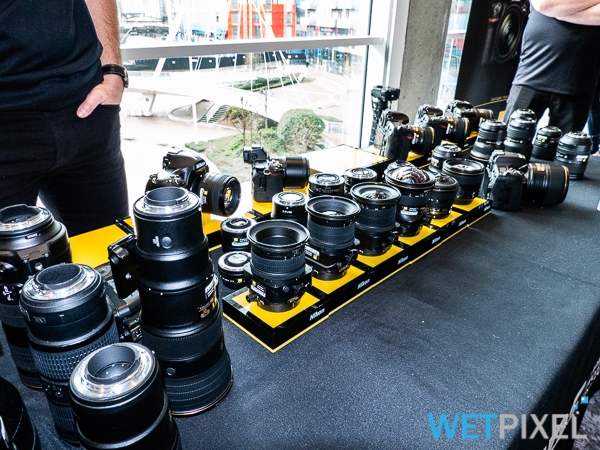
Nikon had pretty much their full range of lenses, including their new 500mm f/4E VR lens (which is about the size and weight of a 70-200mm lens) and the AF-S NIKKOR 180-400mm f/4E TC1.4 FL ED VR ($12,396.95!)
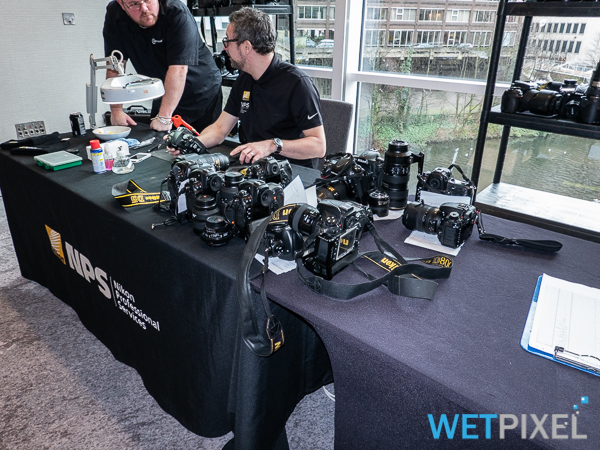
It also is an opportunity to get cameras and lenses serviced and cleaned. Many thanks to Rob and team for hosting the roadshow and I look forward to the next one in 2020.
